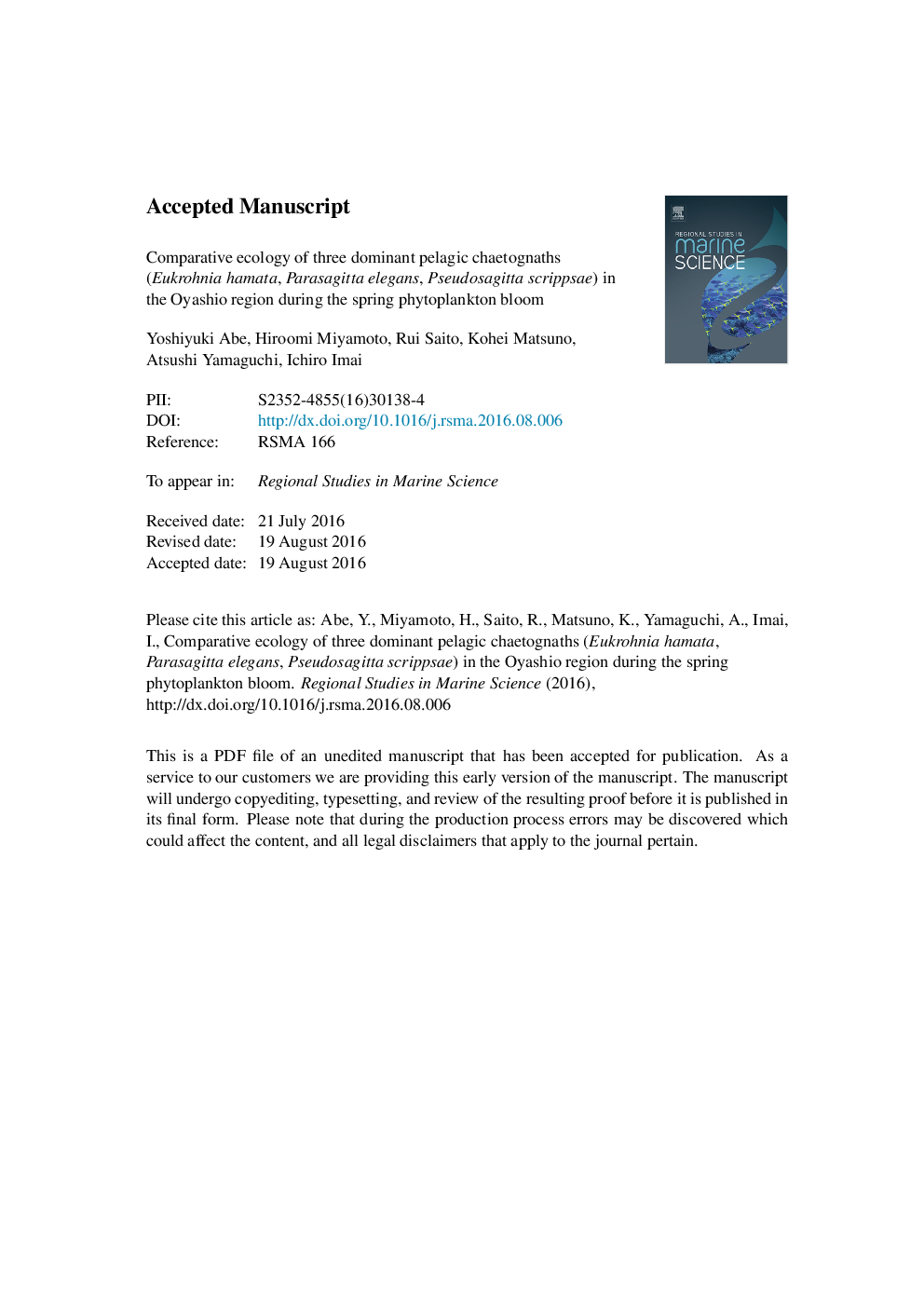| Article ID | Journal | Published Year | Pages | File Type |
|---|---|---|---|---|
| 5758131 | Regional Studies in Marine Science | 2016 | 54 Pages |
Abstract
In the Oyashio region, the dominant water masses are switched at the surface layer within a short period during spring. Simultaneously, a large phytoplankton bloom is known to occur at the surface layer, and nearly half of the annual primary production is concentrated during spring. These drastic changes in the water mass and food condition are expected to strongly affect the macrozooplankton population dynamics. However, their effects on the chaetognath population remain unknown. To evaluate the effects of the water mass exchange and spring phytoplankton bloom, we analysed short-term changes in the population structure, growth rate, gut contents and predation impact of the three dominant chaetognaths (Eukrohnia hamata, Parasagitta elegansand Pseudosagitta scrippsae) in the Oyashio region during March-April 2007. Eleven samples were collected by a 0-200 m oblique tow of a Bongo net at night during 9 March to 30 April, 2007. The effects of the water mass exchange were significant for all three chaetognath species. During the sampling period, significant growth was observed for the two dominant species (E. hamata and P. elegans). The daily growth rate was 39-50 μm dayâ1 for E. hamata and 42-101 μm dayâ1 for P. elegans. The mean predation impact of P. elegans at 0-200 m was 0.194 no. prey consumed m-3  day-1 and that of P. scrippsae was 0.028 no. prey consumed mâ3 dayâ1. These values corresponded with 0-0.097% (P. elegans) or 0-0.043% (P. scrippsae) of the total zooplankton abundance during the spring.
Related Topics
Physical Sciences and Engineering
Earth and Planetary Sciences
Oceanography
Authors
Yoshiyuki Abe, Hiroomi Miyamoto, Rui Saito, Kohei Matsuno, Atsushi Yamaguchi, Ichiro Imai,
